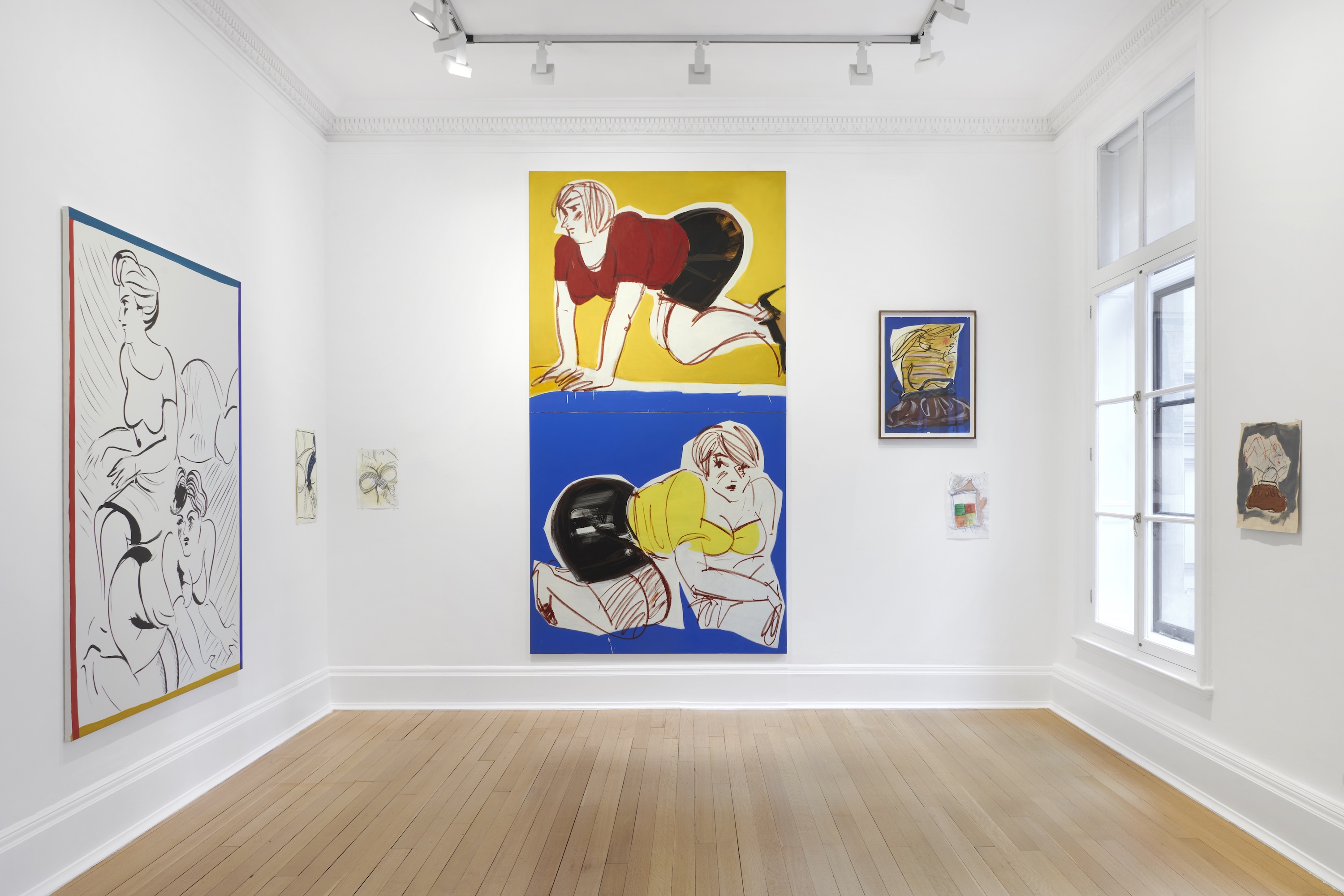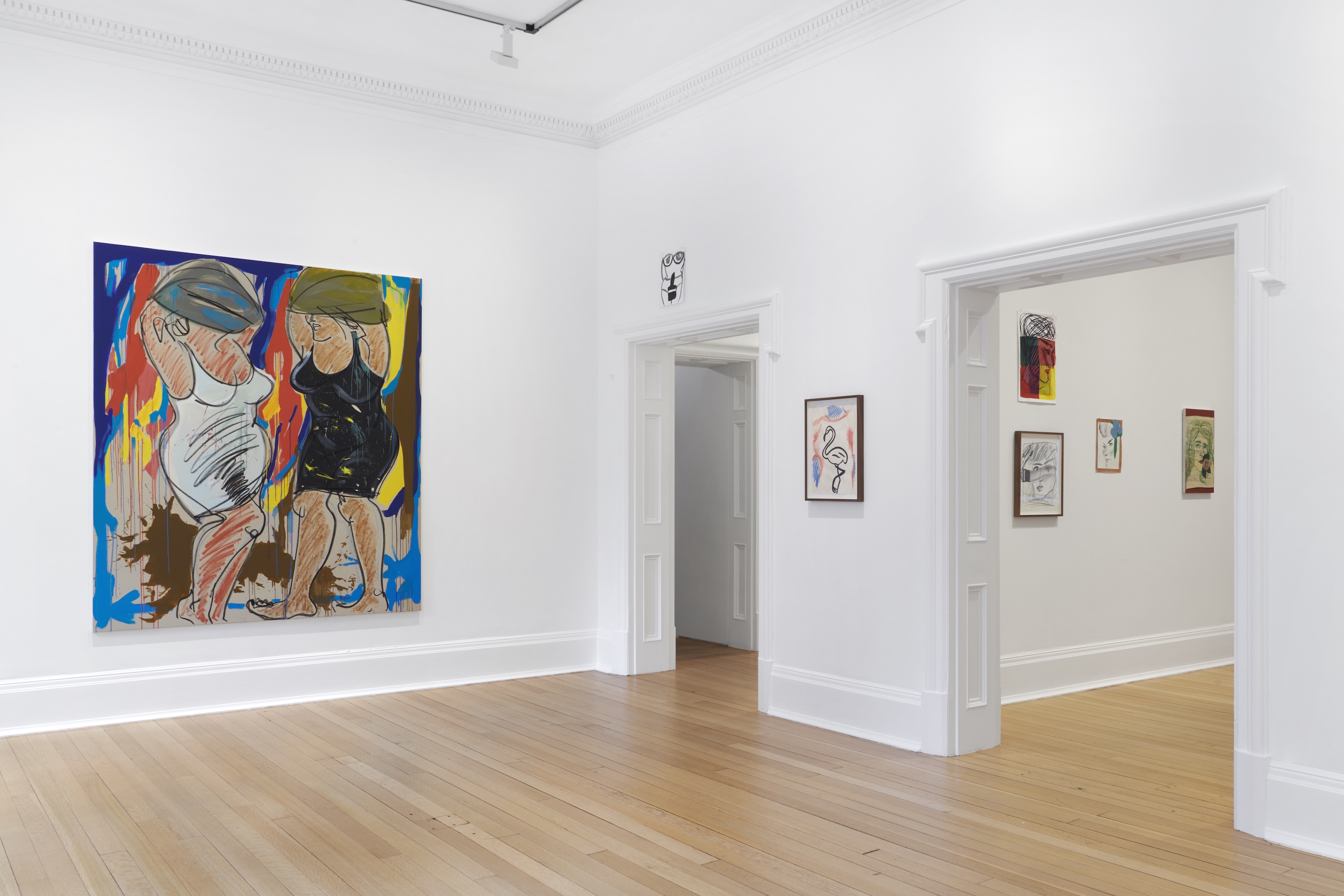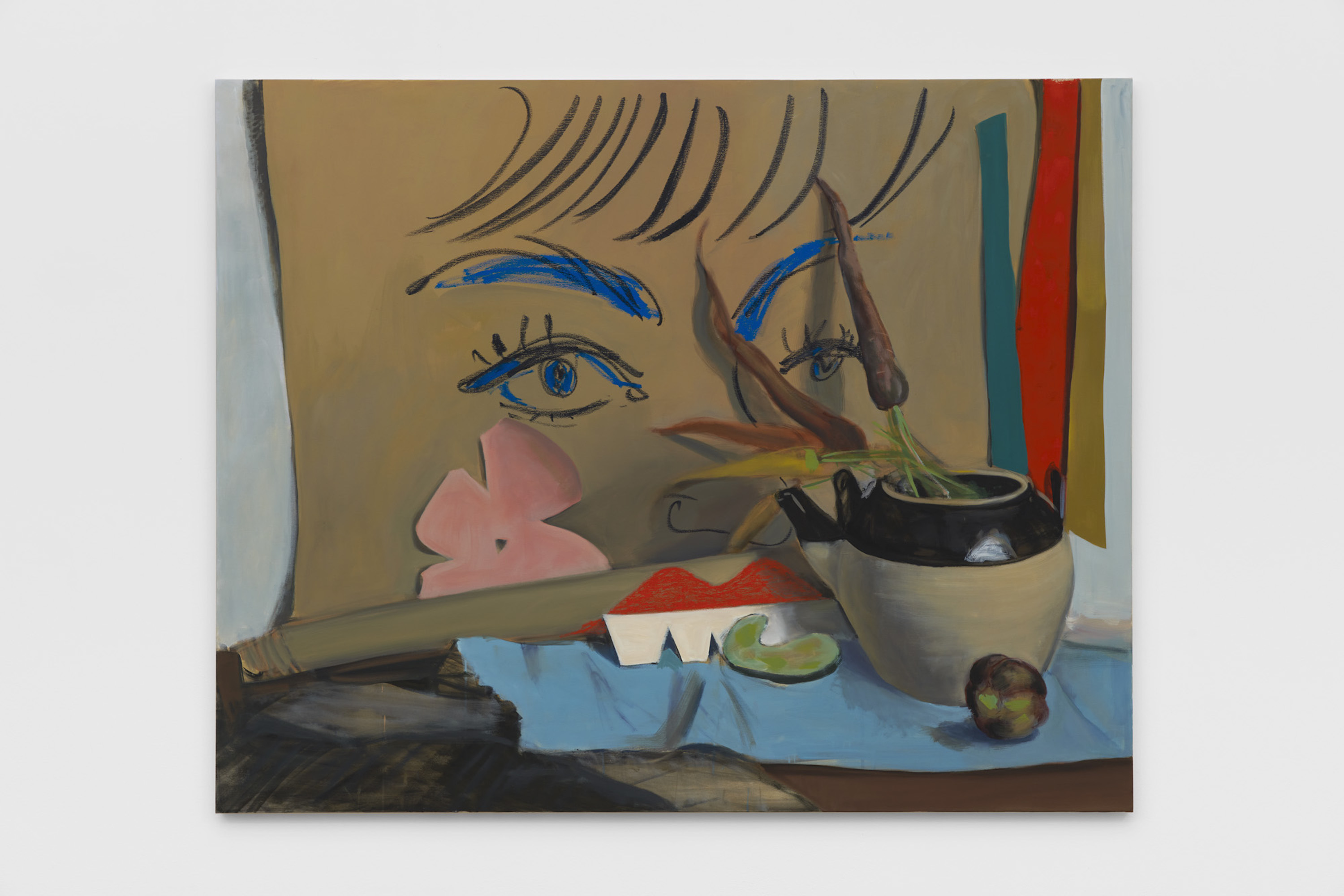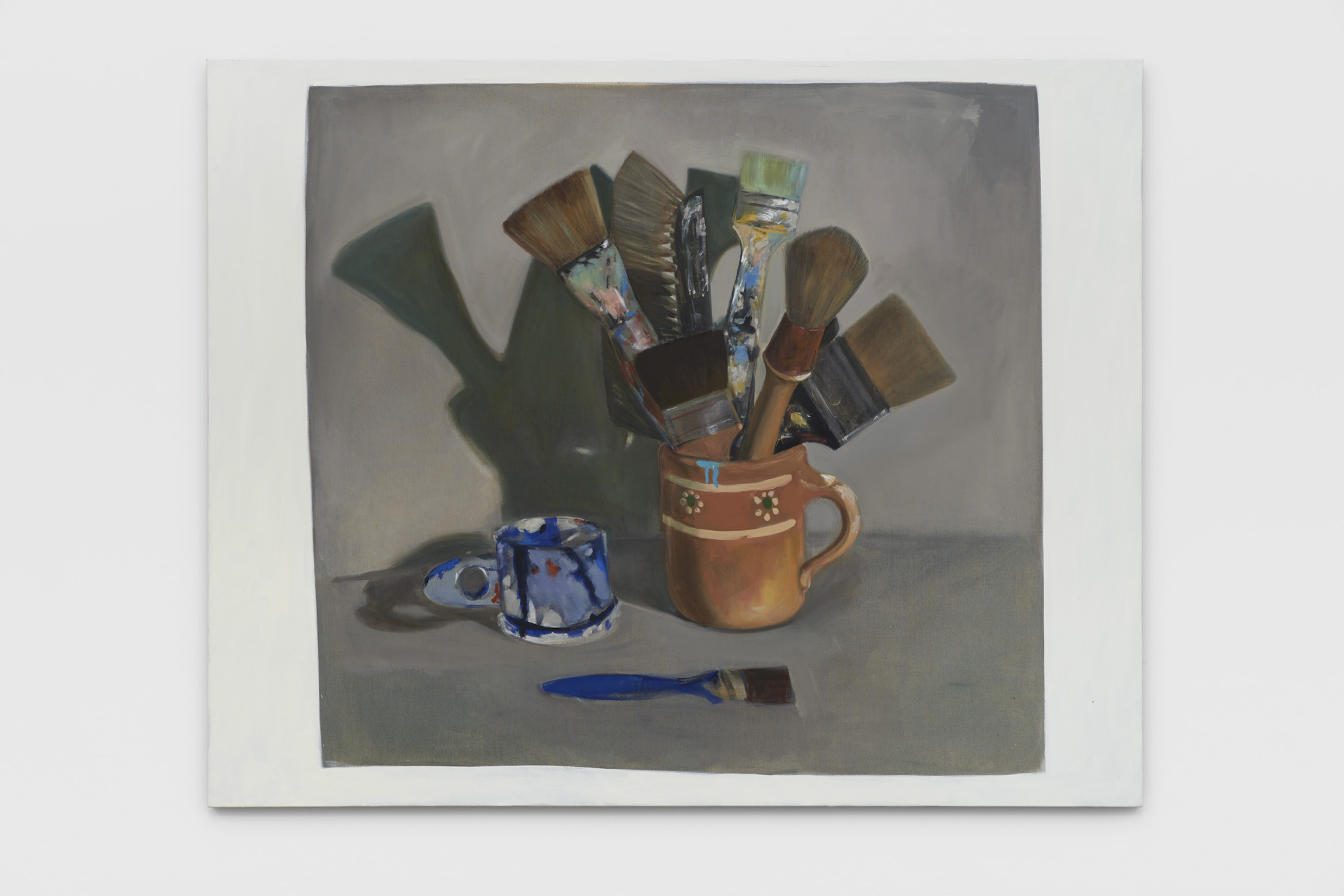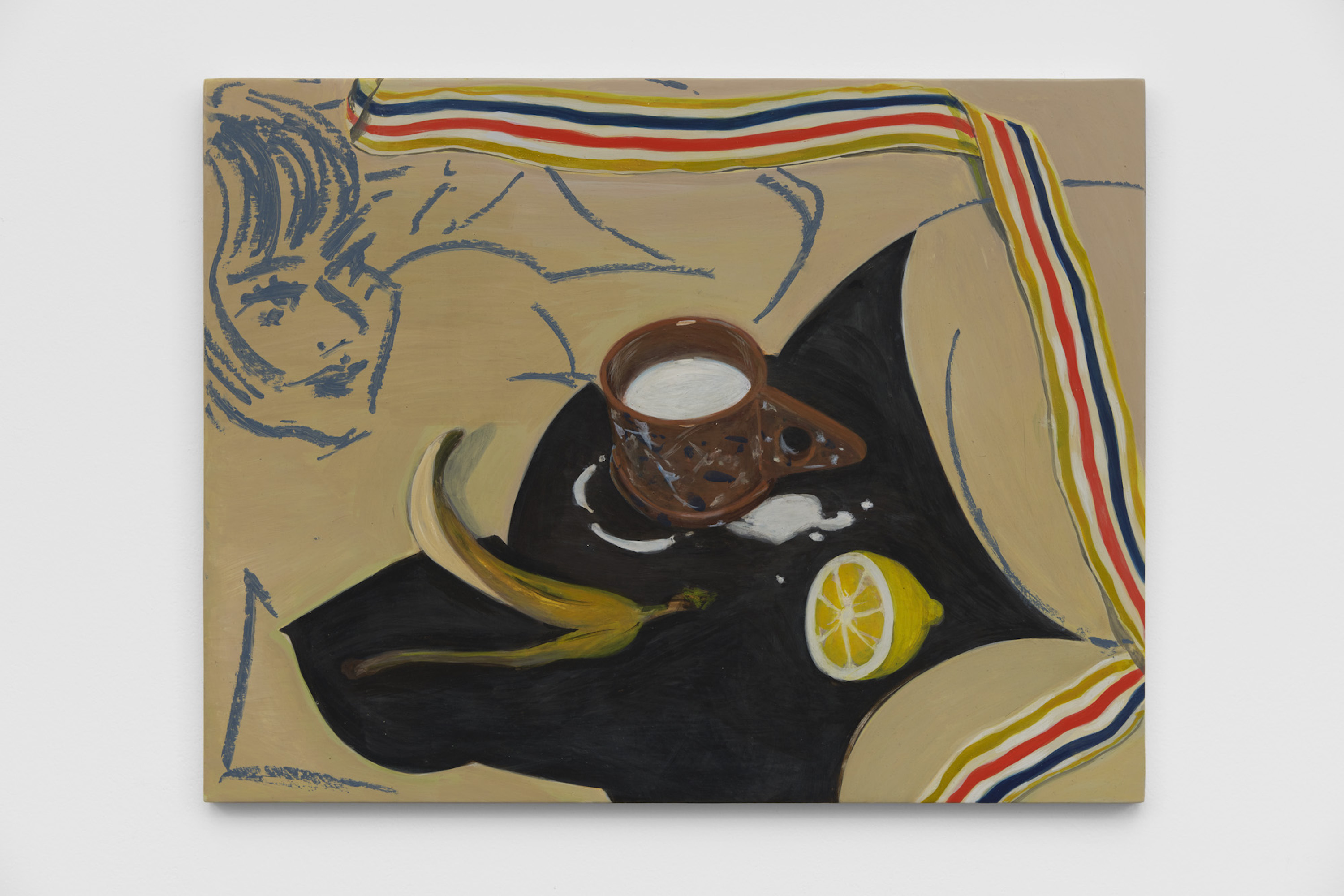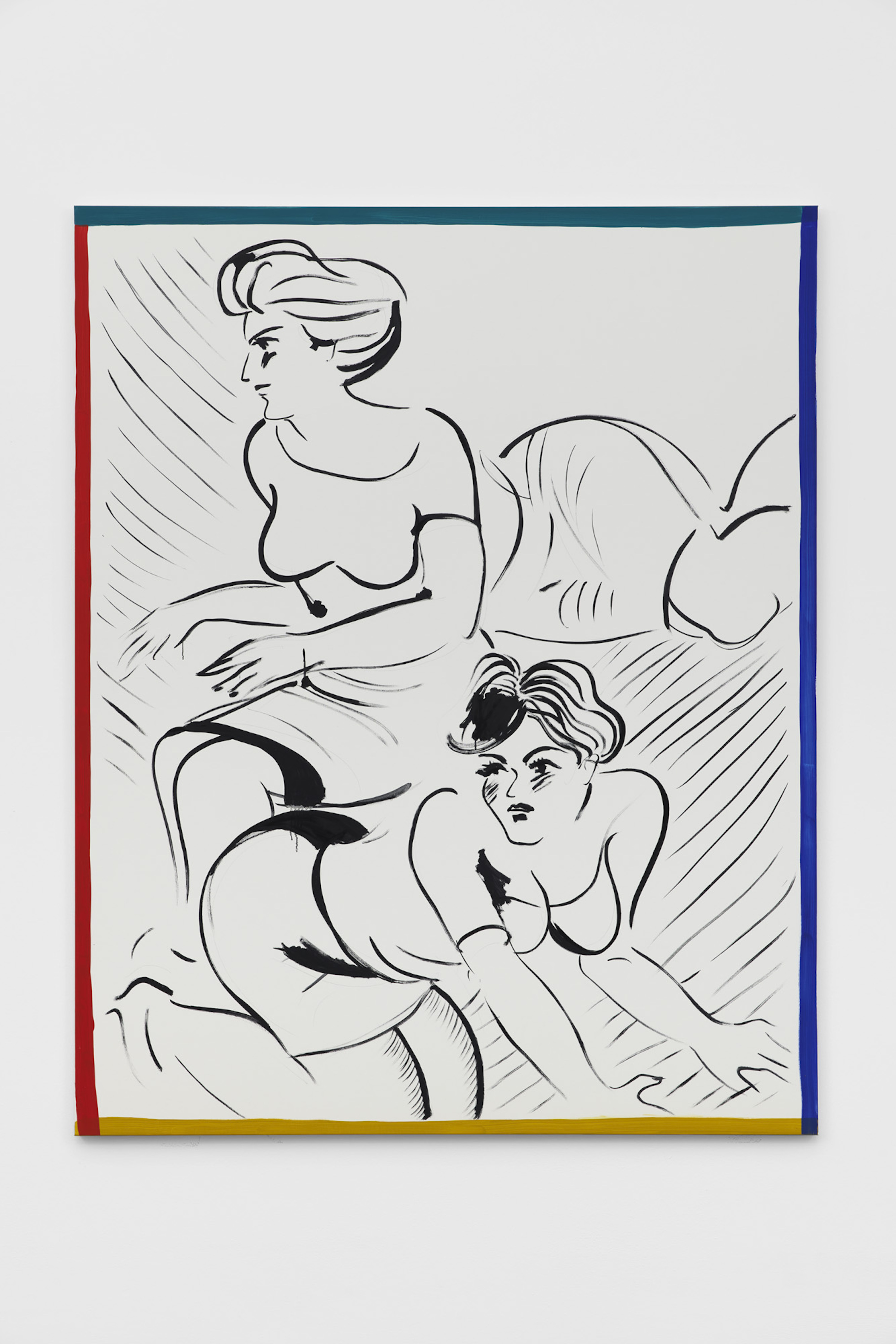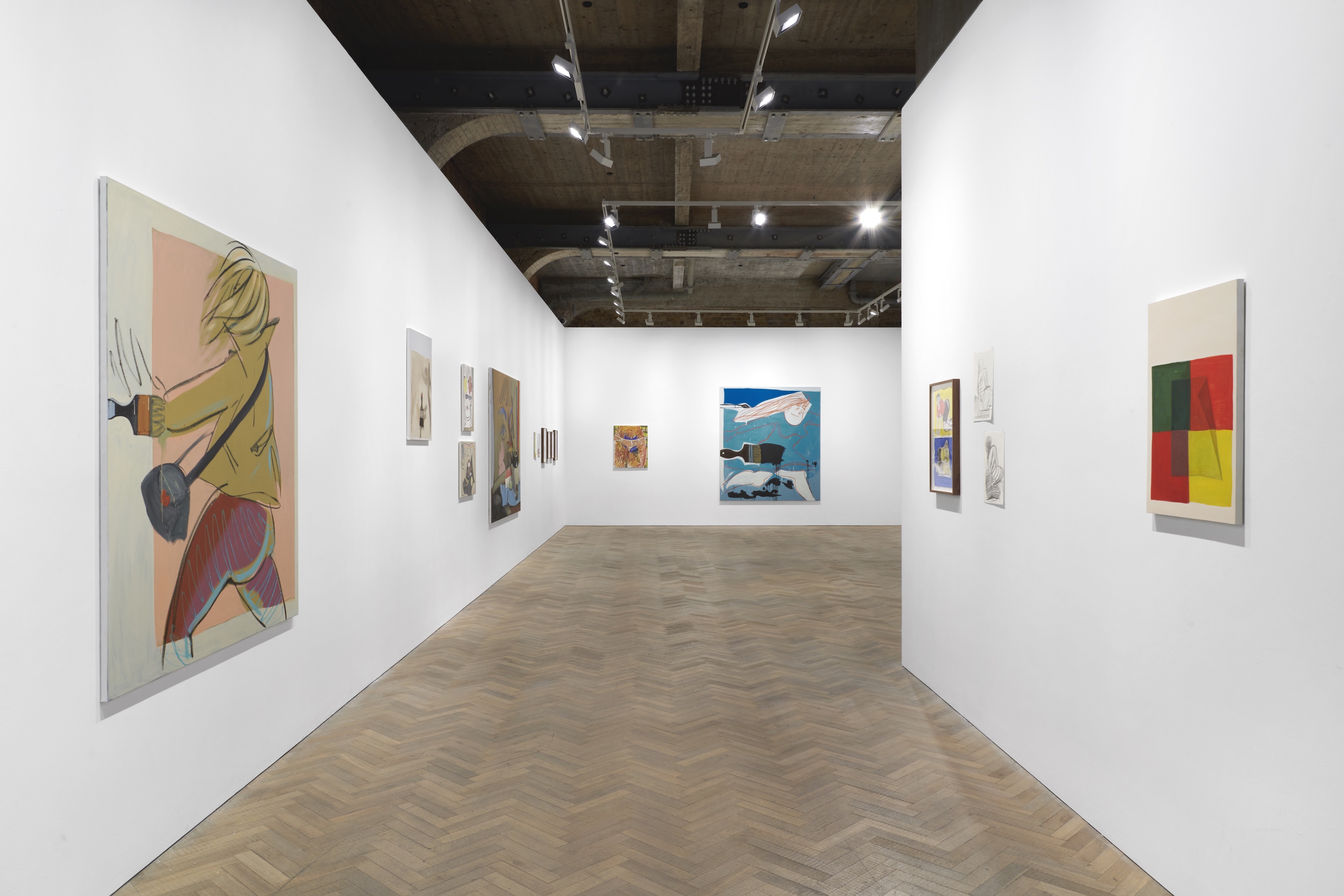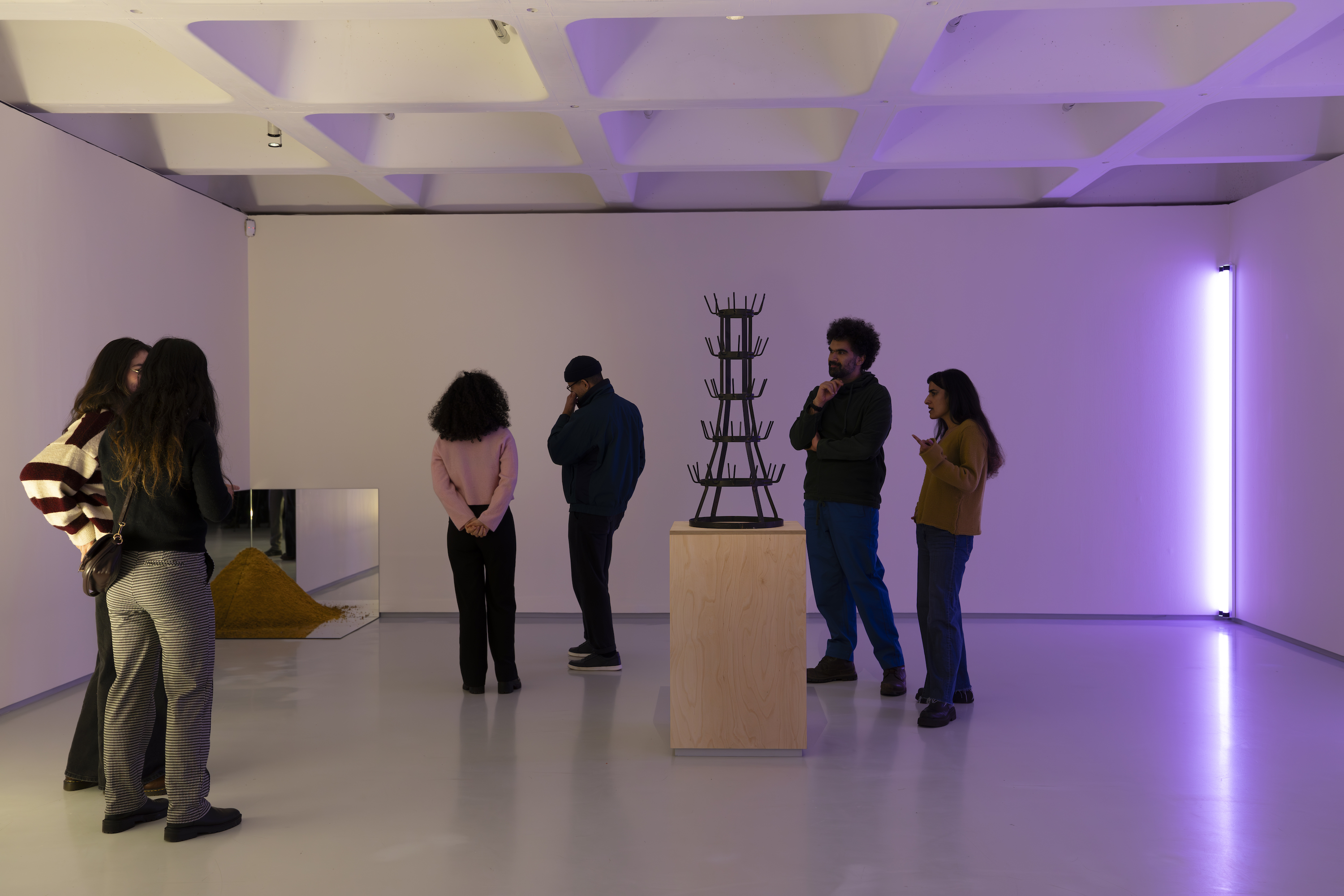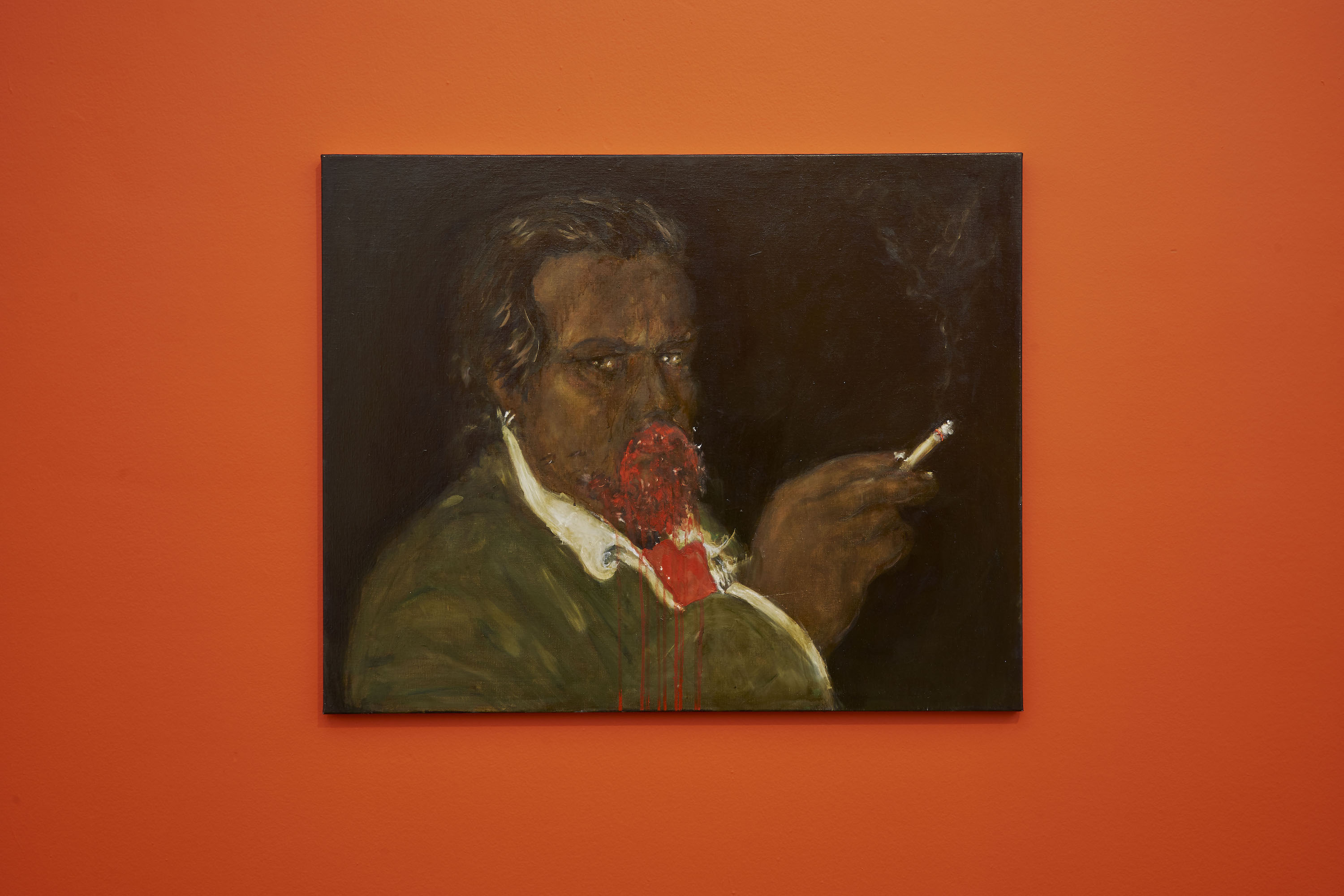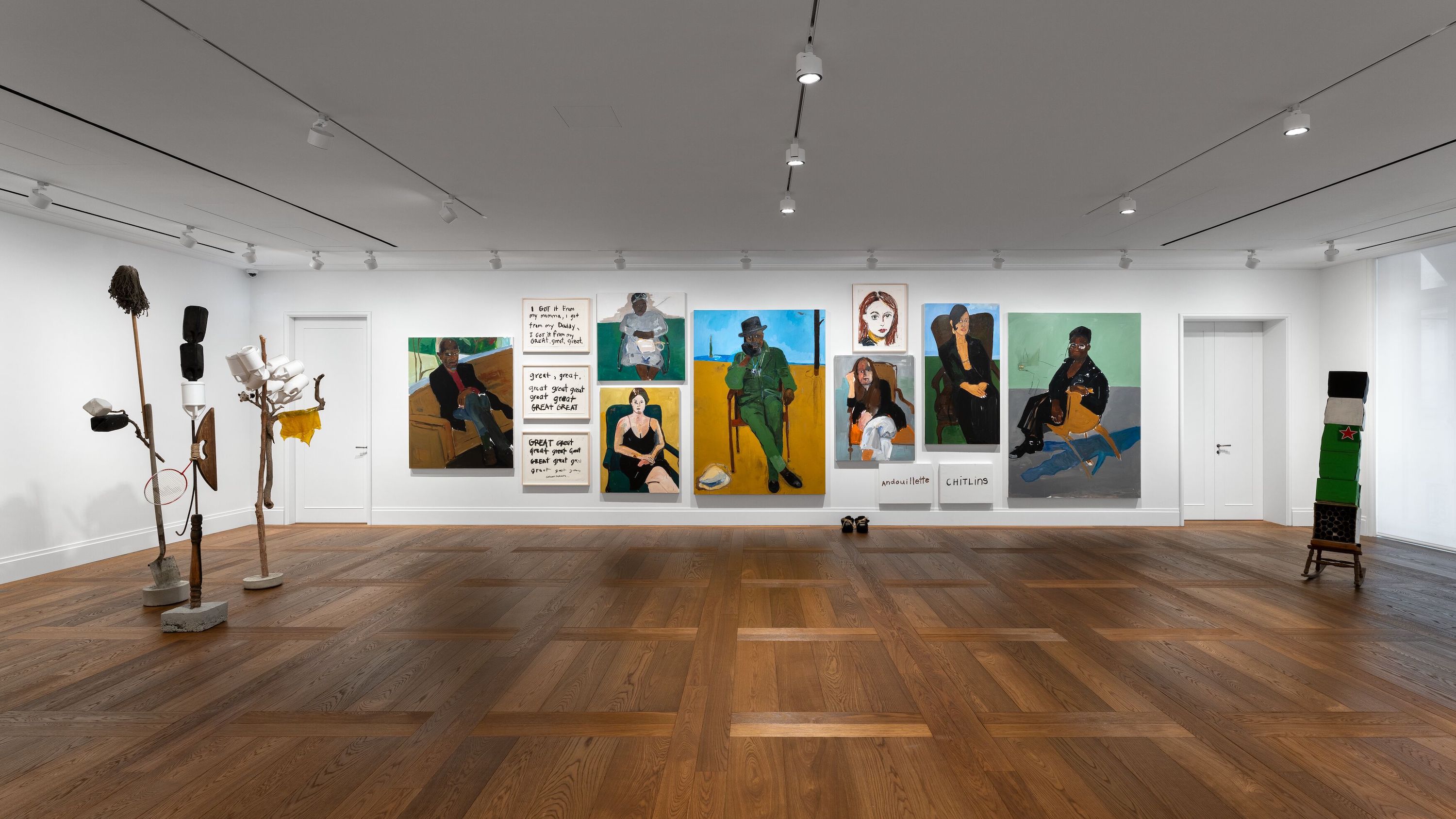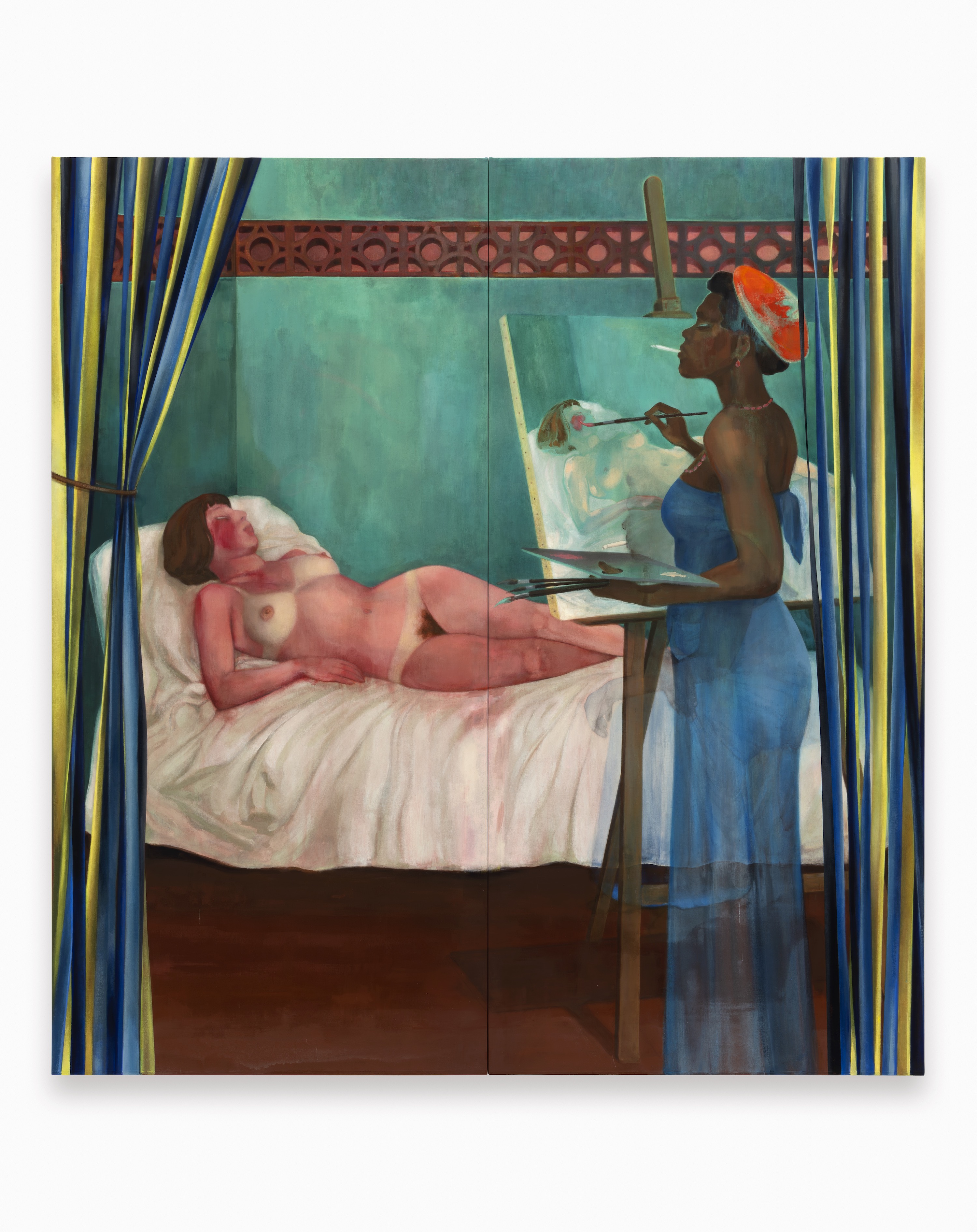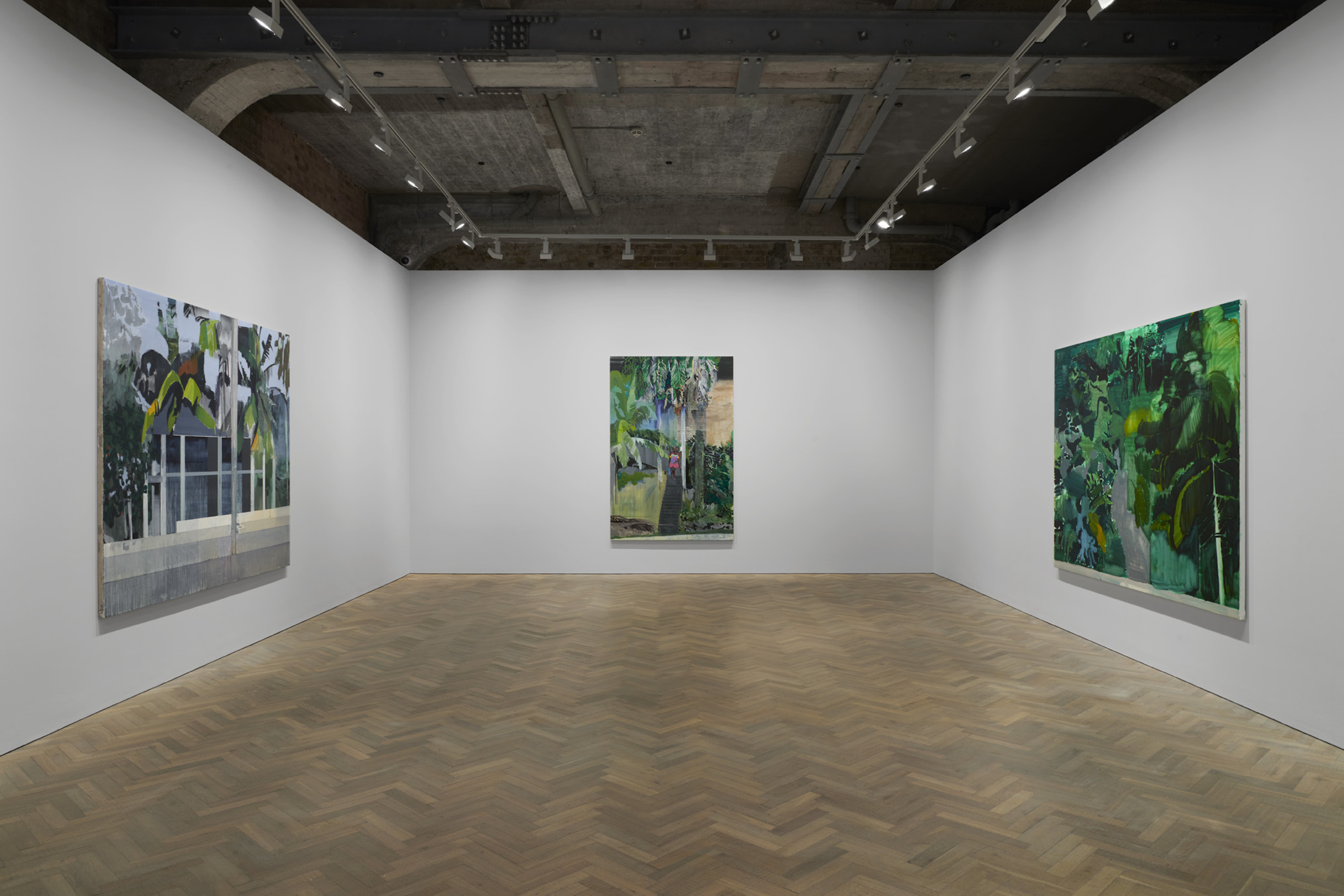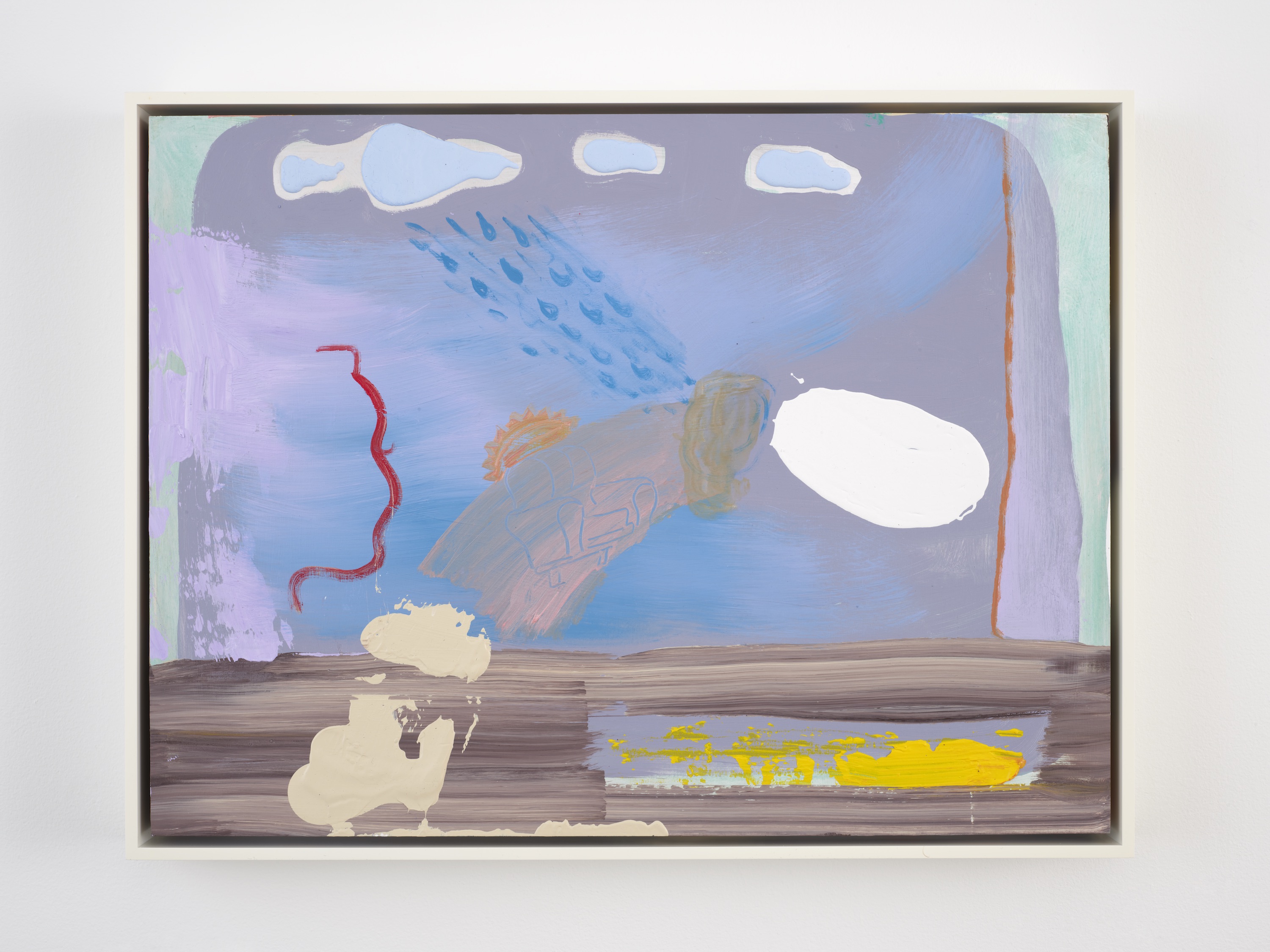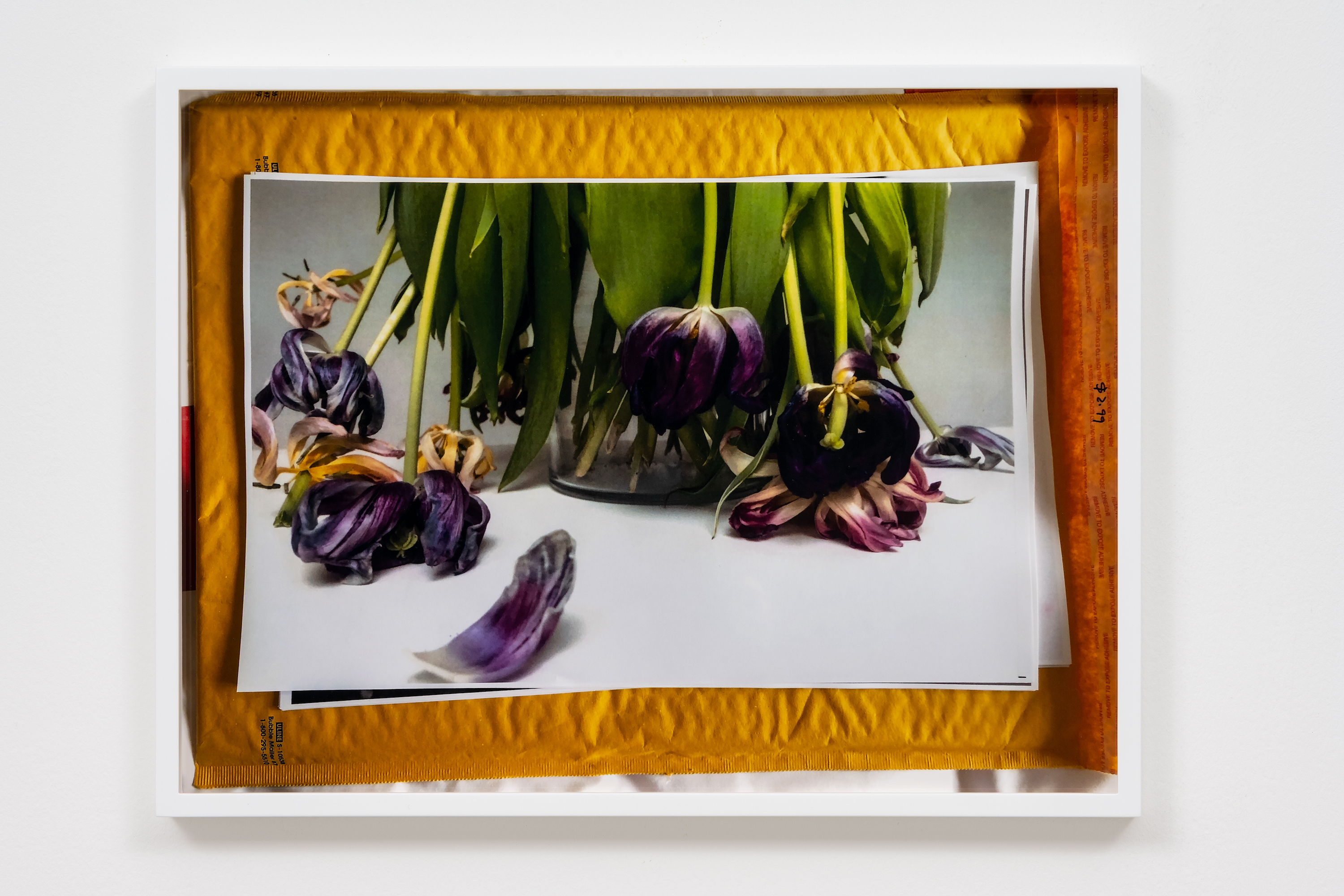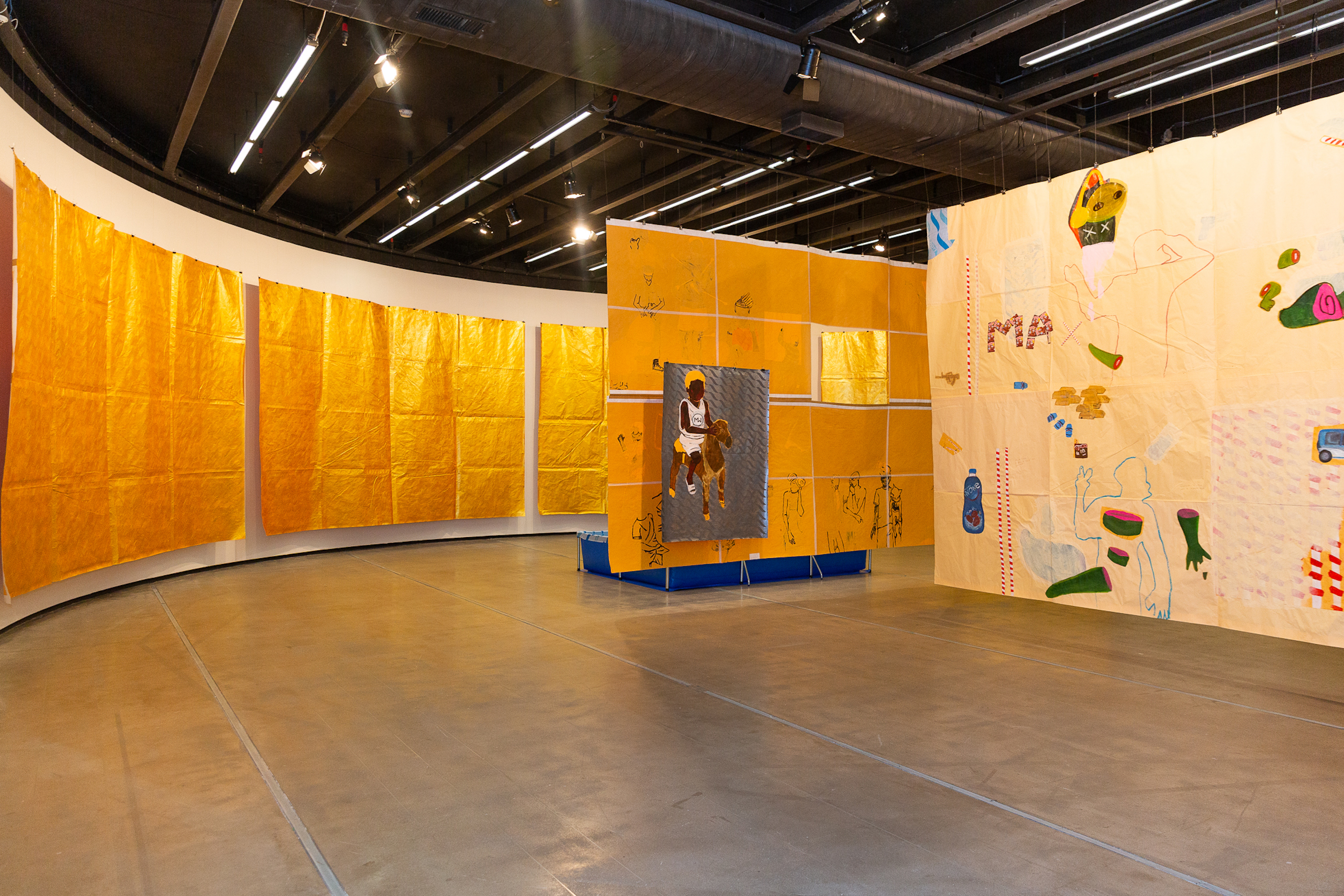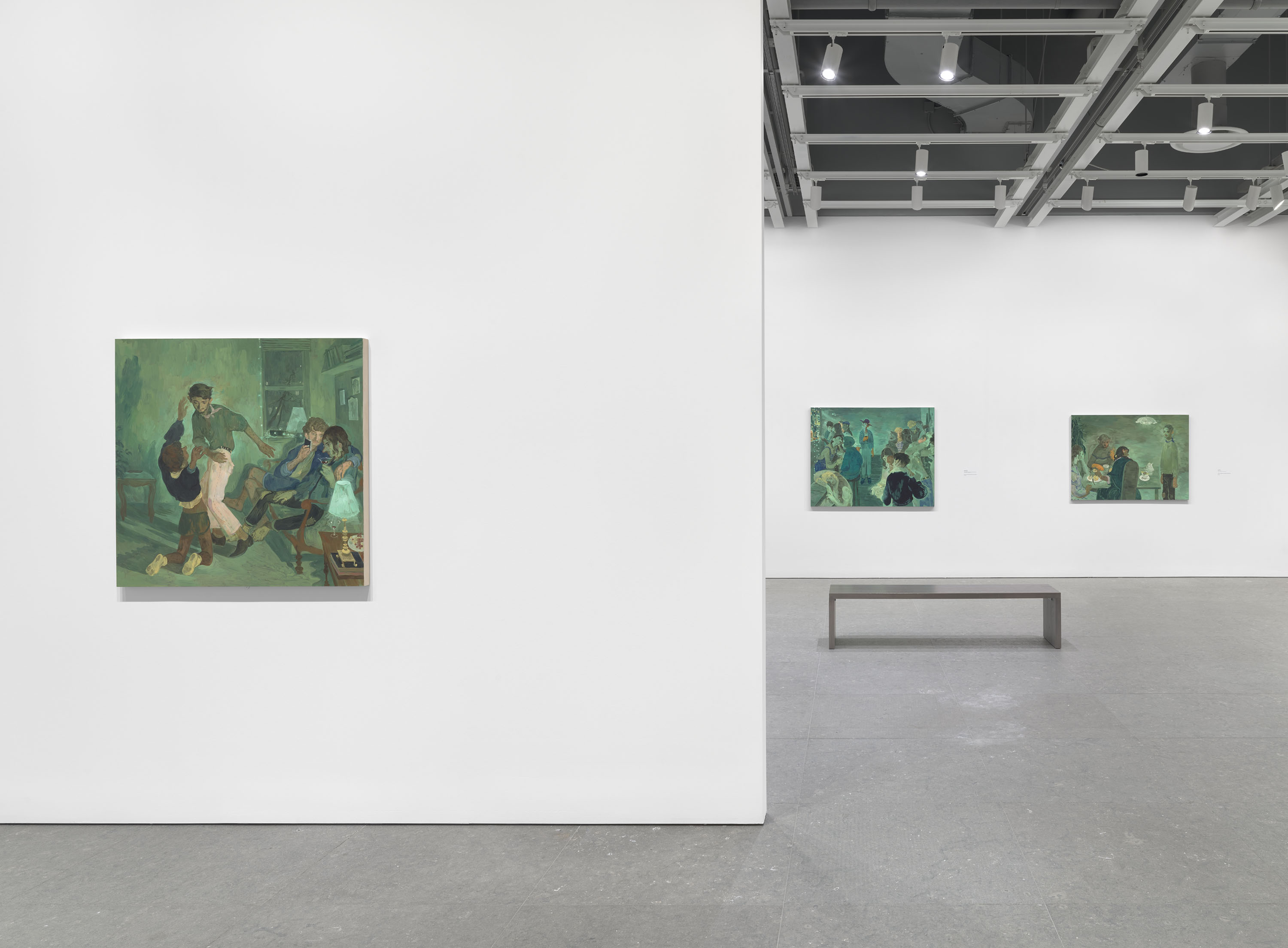Ella Kruglyanskaya’s “This is a Robbery” reopened at Thomas Dane this week, having migrated to the gallery’s website when Covid-19 hit London in March. The transition from a physical to an online exhibition space heightened the intimacy of works—paintings in egg tempera or oil on canvas alongside smaller compositions on paper—in which female characters relate with a closeness that has come, in a time of social distancing, to seem unfathomable. Women lounge around on top of each other, strut side-by-side, or stand in gossipy cohesion. These pictures celebrate women’s bodies while sternly resisting objectification: their forms are hard-curved and muscular, with gazes that are both vulnerable and tough. In the paintings’ complex compositions—in which the artist engages with the traditions of still life, trompe l’oeil, and memento mori—these bodies exist for themselves. In one painting, framed by blue, yellow, and red, women’s limbs merge to create a commingled female form—a multiple-legged structure that resembles an optical illusion. In other paintings, shapes morph into more abstract structures or blend with their surroundings. These manipulations of form dislocate our expectations of what we might expect of gendered bodies in painting.
During her lockdown, Kruglyanskaya also made work for “On The Verge” at Feuilleton, a new project space dedicated to showing works on paper in LA, where the Latvia-born artist now lives. Speaking from our respective quarantines in the US and the UK, we discussed the roles of intimacy, storytelling, and obsession in her work, and reflected on what it means to make and sell art at a time of global crisis.
Rachael Allen: I’m interested in how the characters in your paintings move and interact within the limits of the frame. We are invited into a scene which opens up questions about what it means to be intimate. It can be the angle of a painting that catches a woman who’s moving: we see an unexpected part of her body, or a movement that feels secret, or small, and this intimacy is heightened by your framing of it. What are we being allowed to see, and why are you choosing to show us?
Ella Kruglyanskaya: I never thought of the figures in my work as engaged in any sort of intimacy whatsoever. Not because it’s not there. It’s potentially because there’s a layer of distance between myself and the painting, in the form of the drawing that is the material that forms the painting. It is perhaps revealing, almost like being caught in a hypnotic state, or like taking your glasses off and everything is just a bit blurry. It allows for suspension of self-judgement.
RA: I like the idea that you’re gifting viewers an intimate scene, movement, or figure, while at the same time maintaining a certain distance between painter and painting. Perhaps the hypnotic state in which you work allows for a closeness instead between the viewer and the painting?
EK: This interview will be, of course, a record of these days, this highly charged, “not normal” time. We’re thinking about all sorts of things that, because they seem impossible, appear “intimate.” Like a hug, or a dinner in a restaurant. All the “ideas” for the paintings happen in the drawings. By “scenario,” do you mean the “main event” of the painting?
RA: Yes, that’s why I’m thinking about the idea of intimacy. The desire to be as close to someone as your paintings depict! I think about the movement in Lovely Day (2020). She looks as though she is racing through a busy street. She is going somewhere. I feel so sure that there is a story behind this moment, but perhaps I’m imposing a narrative onto it?
EK: It is precisely the gap between this supposed “story” and what the painting presents, some kind of residue devoid of language that all my “artistic angst” is directed at. Making one’s own story: yes. As an artist, you can also see these “stories” as formal choices as well. The choice of “subject matter” situates the artist. So my agony is always: “Why oh why can I only paint these things?”
RA: Don’t we all have preoccupations that we just return and return to, that are part of the project, our obsessions as artists and writers? Perhaps we can see this not as a limit, but as something to dig into.
EK: Yes, I agree.
RA: When I picture this kind of artistic preoccupation, I always envisage it as a scab you keep picking.
EK: I love that idea of the scab. This could probably be psychoanalyzed, but there are people who can’t stop picking, even when told nothing good is going to come out of that! It could leave a scar! It hurts! Stop it!
RA: Do you feel we might get better, though, at articulating those obsessions and preoccupations? I am stuck on poetry, I think, because it feels to me like the truest way to write. It feels so close to thinking: fragmentary, difficult, contrary. Novels can be this, but I found my way to think through poetry.
EK: I have the same feeling when I think of painting. It’s so self-contained. It’s both comforting and infuriating.
RA: I feel that is a good relationship to have with your art, and a generative one.
EK: Painting is limited, and thrives in limitation. Which is maybe how you feel about poetry. Painting’s limitations create the experience, a boundary to throw one’s body against. The boundaries are a place to find frustration, to yell at, to find meaning, and to see one’s failures.
RA: Perhaps we could talk about how this relates to “This is a Robbery,” your current exhibition at Thomas Dane.
EK: This is going to sound terribly romantic. It was a very disarrayed process. I sort of “thrashed” in the studio, and themes emerged. For a while I was crippled by doubt—it’s part of my usual process, overcoming it—but sometimes the usual stops working. I always wonder what people want to know from the painter about a painting. My answer would depend on that understanding. It’s almost embarrassing to talk about these specifics of individual paintings.
RA: I don’t see crippling doubt in your work.
EK: You can only see its overcoming. When in doubt, I don’t really paint, it’s more of a stewing process. I’ve never been able to translate my doubt into my work directly; perhaps some artists do. It’s part of the process. The editing would take place right there in the work, but that’s another decision—to let your doubt be on record. It’s also possible that the struggle with the ideas is embedded in the “text” of the painting, some kind of “reading” of the images. The execution, which is the painterly aspect, is not the site of doubt. There’s a lot of “unveiling,” “revealing,” and “spilling over” as well as “concealing.” And some painting “about” painting. Not self-reflexive in the sense of referring to the history of painting per se, which is a given, but more simply referring to my own predicament.
RA: You mentioned that you go through a lot of drafts in progressing from sketch to painting, or a lot of different versions of the same kind of sketch? This feels close to how a writer may work—going through multiple drafts.
EK: There’s not really a plan. Drawings, which are the drafts, are individually unimportant, but cumulatively become material, substance. If something resonates, something I drew in a “half-forgotten dream” and then pulled out and that resonance seems enough to structure a painting on top of, I use it as is. Sometimes it resonates but maybe is lacking some kind of convincing something. Then more drafts could help, or simply offer a point of comparison. But also, keep in mind that the paintings themselves are just drafts. There are versions of drafts and then there are versions of painting ideas. One painting cannot hold too much. So we revise, we do another version, right?
RA: Do you find “finishing” work for shows difficult?
EK: The decision-making process for something to be “finished” evolves in parallel with the artist’s thinking, perhaps. How do you decide? Things need to sit, no? There’s a bit of “airing out” or “curing”: all these strange prosciutto techniques are coming to mind, for some reason. There’s also kind of a “record of what happened” quality to all this “finishing” business. At least if you don’t have specific goals to reach, which some artists probably do. There are levels of “finesse” that can be played with.
RA: I don’t think I do decide, I think deadlines decide for us. How did it feel putting up the work for “On the Verge” at Feuilleton in LA, for example, considering you had to work quite fast, and in response to these circumstances?
EK: It depends on the show. An exhibition of new works is always a bit of a fantastical premise, as it is planned way in advance and presupposes the existence of works that have not yet been materialized. This time we’re in is very particular. Chris Sharp, an independent curator based in Mexico City and LA, started this project with his partner BB Beugelmans in their apartment exhibiting works on paper made by artists during the quarantine.1 Yes, I made these works on paper in the past few weeks, and I feel almost self-conscious about them reflecting my own psychic states. Like “Oh yeah, that painter that illustrates her feelings, or ‘expresses them’!” The horror. It sounds ridiculous.
RA: I love the work. The paintings feel kind of rapid or urgent. Did you feel like you were responding?
EK: While there’s this great cataclysm taking place, there’s a miniature echo of it happening in my mind, and it results in a state of almost pathological exhaustion. Not knowing how to proceed, and also sharply aware that we’re perceiving “history.” It throws everything into such high relief. It’s a lot of “feeling” but not knowing exactly what to do with it. So maybe I did this with it. An urgent desire to nap. In a way, it’s not a bad time to make art of whatever variety. Actually, scratch that, I have no idea if it is or isn’t. However, maybe there’s a sense of suspended judgement which can be useful. If previous frameworks don’t hold meaning in the same way, what do we do, and what is at stake?
Ella Kruglyanskaya’s “This is a Robbery,” at Thomas Dane Gallery, London, is open by appointment to July 24, 2020.
